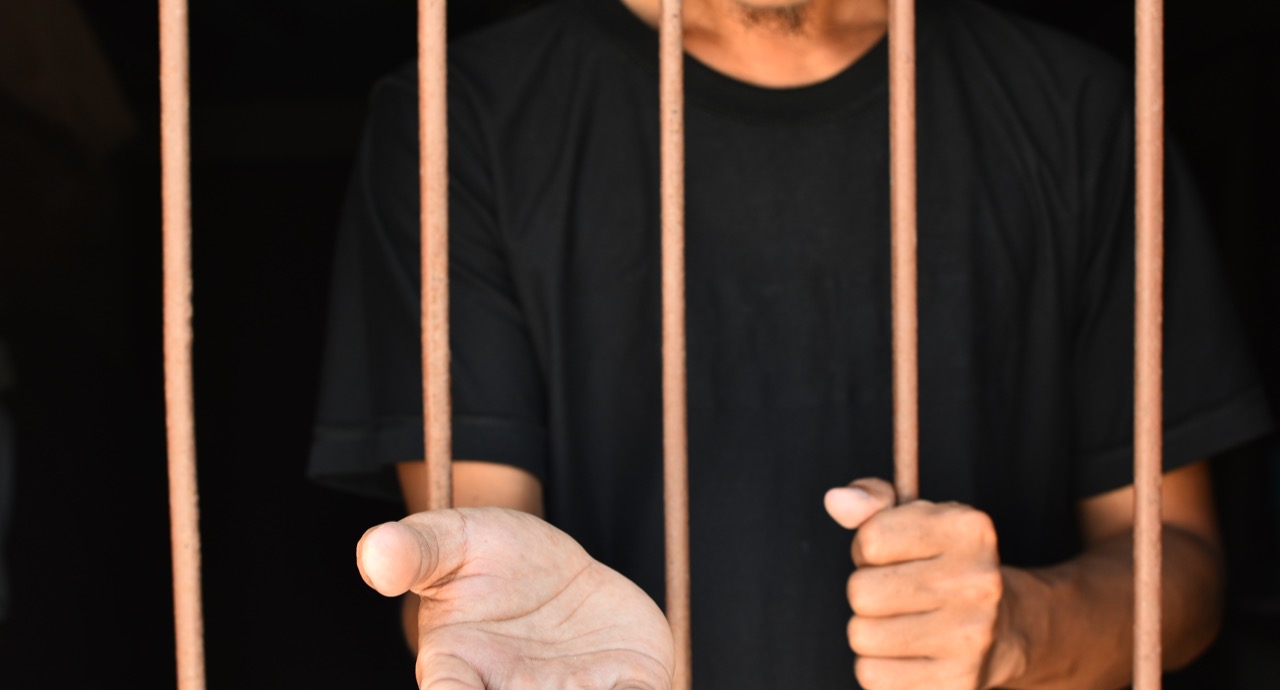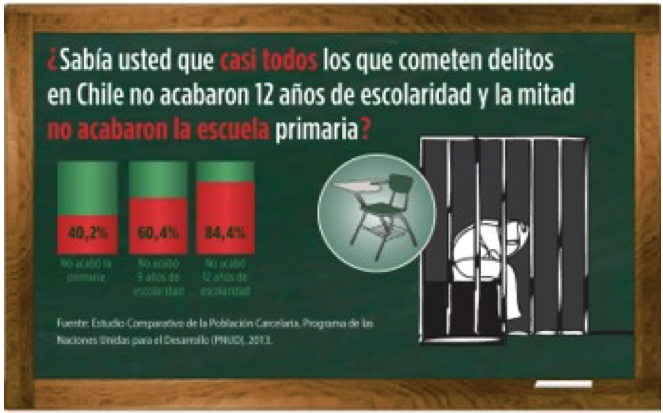Tempering the Taste for Vengeance: Information about Prisoners and Policy Choices

Context
Approximately 1.4 million people are held in penal institutions in Latin America, representing 12.6% of the world’s detainees. Out of every 100,000 inhabitants in the region, 241 are in prison (about twice as many as in the European Union). In the last decade, incarceration in Latin America has increased by over 75 percent. In Chile, incarceration rates are among the highest globally: 216 prisoners per 100,000 inhabitants in 2018. High incarceration rates not only incur economic costs to society, but also harm the imprisoned population through overcrowding, frequent riots, and poor living and health conditions that facilitate the transmission of diseases.
In a larger context, higher incarceration rates are seen as an expression of policy preferences for punitive approaches to crime, commonly referred to as mano dura. However, once these policies are in place, it is often difficult to reverse them even if circumstances change—i.e., crime rates decline. Moreover, research has indicated that preferences for mano dura approaches are not necessarily correlated with actual levels of crime.
The Project
High incarceration rates, often misaligned with actual crime levels, underscore the need to weaken demand for punitive policies and shift preferences in favor of alternative strategies to reduce crime. This study investigates how an informational intervention might impact public policy preferences for crime-combatting strategies.
A survey experiment was deployed as part of the Americas Barometer Survey in 2017 with Chilean participants. The objective was to explore if citizens might shift their preferences away from punitive strategies towards social policies that tackle root causes of crime.
Behavioral Analysis
Behavioral Barriers
Lack of information: People may lack relevant information, for instance, because information is difficult to obtain, scarce, or hard to understand. In this case, citizens might not know about the educational and socioeconomic background of people who committed a crime and might hold pre-conceived notions.
Status quo bias: The tendency to maintain the current status of things. This status quo is used as a reference point, and any change with regard to this point is seen as a loss. For instance, citizens might prefer to maintain current, less efficient crime-combatting policies to avoid change.
Short-termism: The tendency to opt for a lesser benefit in the short term over a greater benefit in the longer term. This is associated with a preference for instant gratification. Citizens might prefer the instant benefits of punitive approaches instead of waiting for better outcomes from social policy or other long-term strategies.
Over-optimism: Optimism bias makes us underestimate the probability of negative events and overestimate the probability of positive events. Citizens might underestimate the welfare loss of punitive strategies and overestimate the benefits of punitive approaches.
Availability heuristic: Individuals judge the probability of a future event occurring based on the ease with which an occurrence of such an event comes to mind. “Mano dura” might be more appealing to individuals since memories of crime might readily come to mind due to the attention they receive in the media.
Behavioral Tools
Framing: Given the tendency to draw different conclusions depending on how information is presented, the desired options can be presented so as to emphasize the relevant part of the information, as well as to highlight the positive or negative aspects of a decision, leading an option to be perceived as more or less attractive. In this case, complementing the question on policy preferences with educational information on criminals might lead to different responses than without such information.
Salience: Our attention is limited. Therefore, behavioral economics pays special attention to when a message is delivered, the location at which it is provided, and the content it emphasizes. Making key elements visible and prominent at the proper time and place is vital and just as necessary as the message's main content. In this case, colors and images increase attention to the information, boosting cognitive and emotional processing.
Empathetic identification: Refers to the capacity of someone to imagine him/herself to live someone else’s experience. In the context of punishments, it has been shown that empathetic identification reduces the preference for punitive crime-combatting policies, since it prompts citizens to contextualize the behavior of offenders. In this case, the information paired with the visuals might induce people to identify with the criminals, which, in turn, might affect their policy preferences.
Intervention Design
The authors conducted an experiment as part of the Americas Barometer Survey 2017, administered by Vanderbilt University. The sample consisted of 1,625 adult Chileans, that, in form of a stratified sample, are nationally representative. Each of the participants was assigned to one of three groups, one being a control and the other two being experimental groups. One of the experimental groups was part of a different research project and excluded from further analysis. Thus, the experiment essentially consisted of one control and one treatment group. Participants in the latter received the infographic presented in Figure 1. Its content strongly focused on the educational background of criminals in Chile: “Did you know that almost all of those who committed a crime in Chile did not complete 12 years of schooling and half did not finish primary school?”
A bar chart with statistical information on educational attainment of criminals as well as two images, one clearly associated with schooling and one depicting an inmate in a difficult emotional state visually complement the question above.
Participants were tasked to physically distribute a fixed number of resources (represented by coins) among them, which aimed to elicit relative priorities among them (see Figure 2). Further, this frame should approximate resource limitations government face in many decision-making processes. The four policies were the following:
- Increase the punishments given to criminals (punitive policy)
- Offer subsidies / help people to buy security systems and other forms of self-protection (detective and protective policy)
- Implement preventive measures, such as vocational training and rehabilitation programs (social policy)
- Invest more money in anti-poverty programs (social policy)
The third and fourth categories were collapsed since both represented social policies. The analysis used differences between resource allocations for each of the three as dependent variables. Balance tests indicate a successful randomization of treatment and control group. In consequence, data were analyzed with OLS regressions, with the control group as omitted category. Results are reported in different modifications, including the inclusion of covariates to control for, among other characteristics, sex, age, education, security perception, and political ideology. An alternative operationalization of the dependent variable asked for agreement or disagreement with police officers ignoring the law to punish criminals themselves.
Figure 1. Stimulus Material in the Treatment Group.

Figure 2. Dependent Variable: Relative Policy Preferences among Crime-Combatting Strategies.

Challenges
- The experimental design cannot distinguish between the effects of the emotional component of the intervention (empathetic identification) that might result from the strong visual on the right-hand side and the informational component that describes the educational background of inmates.
Results
- Results show that respondents in the treatment group displayed a stronger preference for social policies over punitive or detective policies relative to the control group.
- Results are highly significant and provide strong effects sizes. The difference between resources allocated to social policies and those to punitive policies increased by approximately 50 percent.
- Treated participants also increased resources allocation to detective and protective policies over punitive policies by roughly 20 percent (Figure 3).
- In the dependent variable's alternative operationalization, support for mano dura approaches was reduced by 6 percent.
- Looking at the resources allocated to each strategy, we see a significant decrease of 10 percent for punitive approaches and an 8 percent increase in resources allocated to social policies.
- When analyzing individual preferences instead of differences, results are consistent; the number of resources allocated to punitive strategies decreased by 10 percent.
Figure 3. Treatment Effect: Allocation of Resources among Policy Preferences for Crime-Combatting Strategies (Differences).

Policy Implications
- This study has shown that preferences for crime-combatting strategies can be changed. The results are particularly relevant in the Chilean context, where positions on police and the justice system are historically polarized after Pinochet’s dictatorship. If a change of preferences is indeed possible in a relatively rigid environment, the potential for attitudinal changes should exist in other countries as well.
